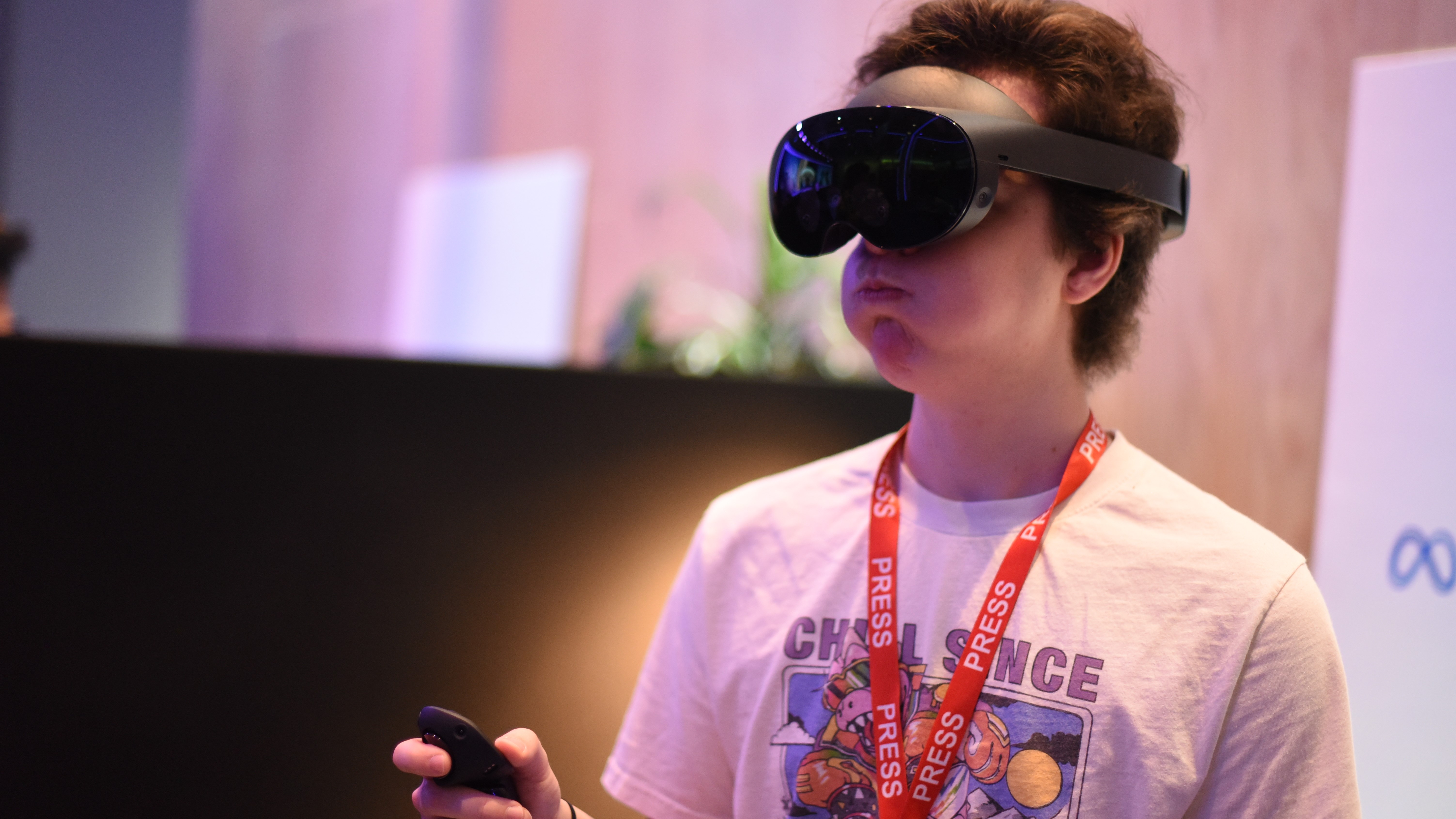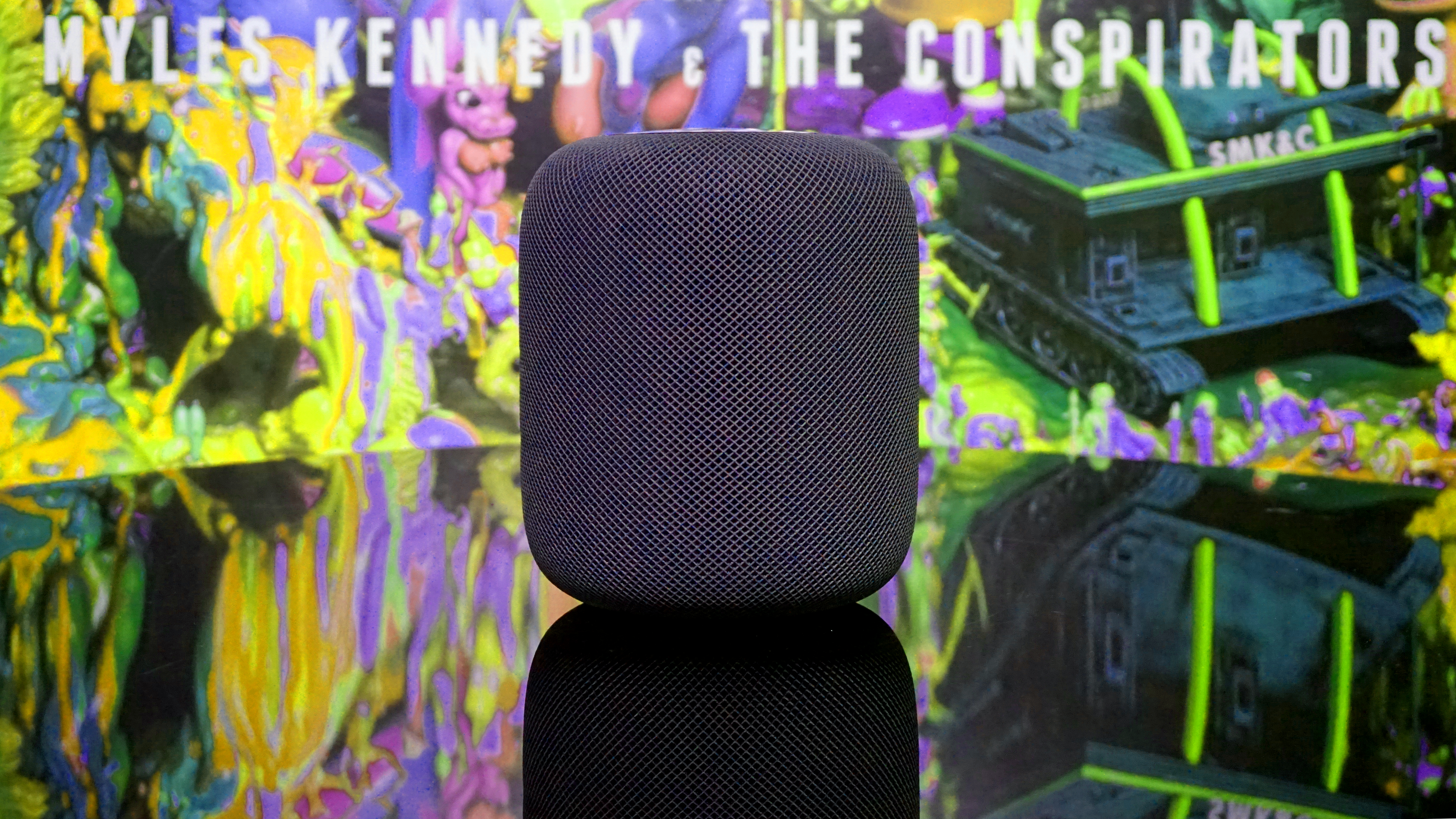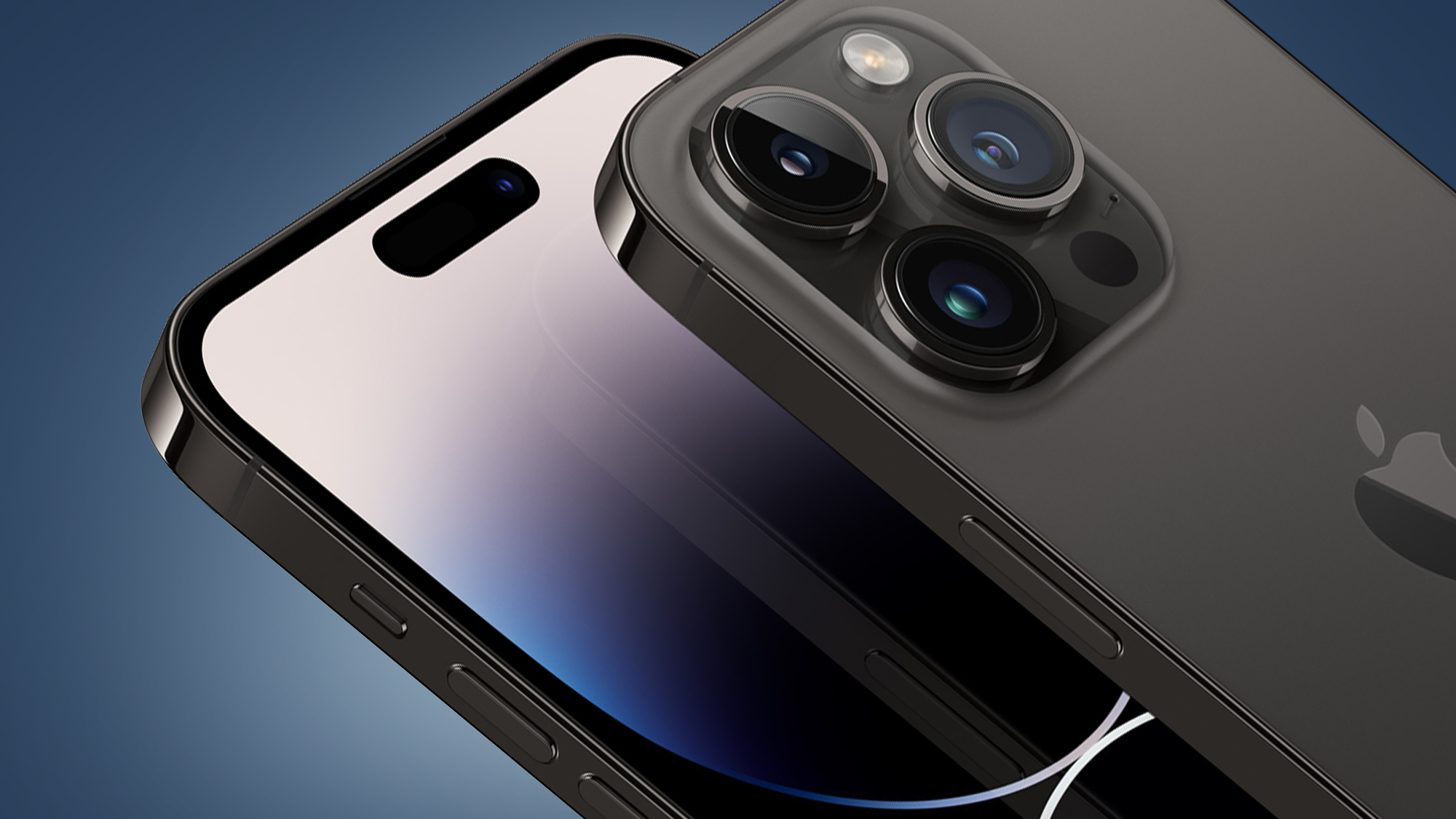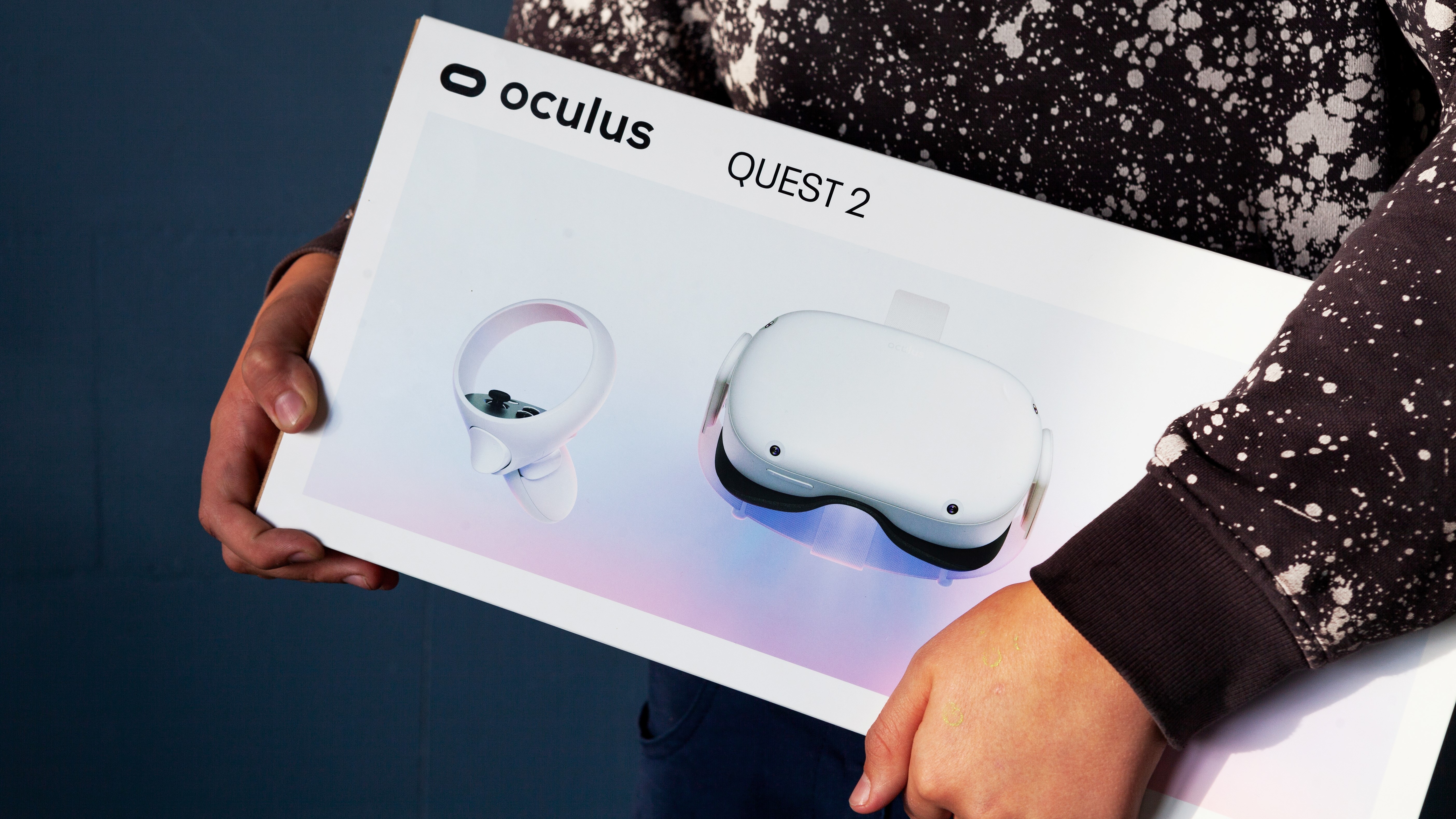Sorry Apple, here's why I'm convinced your VR headset will be a high-profile flop
Opinion: Don't wait for Apple to join the game, VR is already amazing

I don’t believe the Apple VR headset will be a success. There, I said it. None of the rumors or leaks I’ve seen have convinced me that Apple’s headgear will be anything more than an expensive novelty that’ll end up going the same way as Google Glass.
I’m hesitant to admit that publicly though, lest I become yet another person to make an utterly terrible tech prediction. Because despite my belief that the leading VR brands are already offering far better headset options, Apple has a knack for slapping its logo on a device and raking in the dough.
But today I’m ready to go on the record. To paraphrase Steve Ballmer (former CEO of Microsoft): there’s no chance that the Apple VR headset is going to get any significant market share. No chance. Here’s why.
Apple: Into the metaverse
Apple hasn’t admitted publicly that it’s developing a VR headset, but thanks to a steady flow of leaks over the past few years we’ve got a pretty good idea of what the device will look like and be capable of.
Based on what we’ve seen and heard (all of which should be taken with a pinch of salt until we hear anything official), the Apple wearable will look like a slimmer version of many existing devices, such as the Oculus Quest 2 – with that design likely achieved by incorporating the pancake lens found in the Meta Quest Pro, or a similarly compact optical setup.
The pint-sized product will apparently still be packing a punch, however, with reports suggesting that it will have an ultra-crisp 2,800 pixel-per-inch micro OLED display. This screen will allow users to take in the new operating system and its features – rumored to be called xrOS or realityOS – which, it seems, they’ll be interacting with not via typical controllers but with voice commands and hand gestures, with the headset able to monitor the user’s face and eye movements using in-built cameras and sensors.

Under the hood – or rather behind the display – the headset will apparently be powered by two different chips. One will be XR-focused (XR is a catch-all term for VR, AR, and MR) – either a Snapdragon XR2, XR2 Plus, or something similar of Apple’s own design – and the other will be an M2 chip: that’s right, the same chip that powers Apple’s best MacBooks and Macs.
Sign up for breaking news, reviews, opinion, top tech deals, and more.
However, the headset – which has been described as ‘a laptop on your face’ on account of its expected processing power – will likely have one major letdown: battery life. According to people familiar with the device, the Apple VR headset will only be usable in short bursts; we’re expecting a battery life that’s no better than the Meta Quest Pro’s roughly hour-and-a-half-long usage time between charges.
Oh, and let’s not forget that it’ll probably cost you in the region of $3,000 (around £2,200 / AU$ 4,400).
One headset for the price of four
Tech can be expensive – especially in emerging industries like the XR space – and Apple is certainly not shy when it comes to launching pricey products, but $3,000 is a lot of money.
To put it in perspective let’s see what else that much of your hard-earned cash could get you. In the VR sphere, you could buy an Oculus Quest 2 ($430 for the 256GB model), a Meta Quest Pro ($1,000), a Pico 4 (around $460 for the 128GB model), a PS5 ($500 for the disc version), and a PlayStation VR 2 headset ($600) and still have $10 left over for a coffee and a sandwich; or if you’re looking for new Apple tech you could instead pick up an iPhone 14 Ultra ($999 for the 128GB model), an Apple Watch Ultra ($799), an iPad Pro 12.9 (2022) ($1,099 for the 128GB model), and a 2nd-gen Apple Pencil ($129) for a smidgen more, at a total of $3,026.
Now, you probably don’t need four VR headsets (especially not both Quests from Meta), and if you’re buying Apple’s headset you’ll probably already be invested in its ecosystem. But those comparisons go to show how $3,000 stacks up against the Apple headset’s biggest competition.

The Oculus Quest 2 has proven that price is a major driving force for people looking to pick up a VR headset. The very budget-friendly ($400 / £400 / AU$630) headset has sold around 20 million units since launch, far outselling all other Meta/Oculus headsets combined – including the newer Meta Quest Pro. Sure, its performance is more limited than more recent releases, but in terms of value for money it's yet to be beaten, and people are still flocking to Meta’s hardware for that reason.
Other than price, another issue with the Meta Quest Pro (which I highlighted in my four-star Meta Quest Pro review) is that its most premium features – face-tracking, eye-tracking, and color passthrough – feel underused.
Given that Apple hasn’t been developing XR experiences or working with XR developers for as long as Meta, I have a hard time believing that its headset will make these features feel any less gimmicky and overpriced at launch. What’s more, its rumored productivity upgrades are likely to go unappreciated – because working in VR, frankly, sucks.
I spent a week wearing my Meta Quest Pro and working in VR, and I was surprised, and disappointed, by how clunky and uncomfortable the experience was. If Apple intends for its headset to be a laptop replacement thanks to its M2 capabilities, I’m already pretty confident that it won’t be that for me – I’ll take a regular MacBook thanks.
Hitting too close to HomePod
The more leaks and rumors I hear about the Apple VR headset, the more it reminds me of another Apple product: the HomePod.
The original HomePod launched in February 2018 as Apple’s first-ever premium smart speaker. In our three-and-a-half-star Apple HomePod review, we commended the device’s “amazing sound and incredibly intuitive set-up”, but its over-reliance on the Apple ecosystem and its relatively high $349 / £319 / AU$499 price meant that overall, it was a disappointment.
Couple that with the fact that it was launching well after rivals like Google and Amazon had cornered the market with a range of budget-friendly yet capable smart speakers (with options like the Sonos One catering to audiophiles) and it’s no surprise that the HomePod was unceremoniously discontinued in 2021.
While Apple did launch a HomePod 2 in January, it was announced with minimal fanfare, and it has the same shortcomings as the original (the HomePod mini has stuck around, but Apple barely mentions it these days).

I think Apple’s VR headset will struggle for the exact same reasons. It looks set to be too premium a product for most users in a market that already offers a range of VR headset options for every budget. Perhaps it’s no surprise then that recent reports suggest Apple’s designers are nervous about releasing the headset this year.
Siri, define Success
Despite the odds appearing to be stacked against its VR headset, Apple could somehow pull this out of the bag.
While rivals including Samsung and Microsoft consistently produce tech that’s on a par with or superior to Apple products, their product launches tend to generate far less excitement. Apple fans are a distinct and numerous body of tech consumers, and they’re ravenous for new products; even if someone else does it better, they’ll still be queuing around the block at the Apple store to get their hands on whatever’s new. As such, the Apple headset could sell well simply because it has the brand’s iconic logo slapped on it.
Speaking of Apple stores, another advantage Apple has going for it over most other VR brands is that it has dedicated retail space in major cities across the globe. The best way to market VR is to get people to try it for themselves – this is a big reason why I’ve long felt that WWDC 2023 is the perfect place for a VR headset launch. Unlike Meta, HTC and others, Apple can easily leverage its stores and get its headset on people’s faces so they can try it out, be amazed, and be convinced to buy one.

And even if Apple’s first VR outing isn’t a commercial success, that doesn’t necessarily mean it’ll be a failure. Apple reportedly already has plans to launch a cheaper follow-up VR headset in 2024, and a pair of AR Apple Glasses after that. As with the HomePod, it seems that Apple plans to persist with VR for a few years, even if its first device isn’t an instant hit.
Apple could also make a big splash in the VR industry in at least one way: privacy. VR headsets are becoming increasingly reliant on cameras and sensors that record intimately private data – they’re used to determine the layout of the room you’re using your headset in, and can track your eye and face movements. This data could be invaluable to advertisers, who could in theory analyze what products you do or don’t have at home, and what catches your eye – literally.
Many XR brands are already transparent about how they handle data and offer extensive privacy controls, but Apple has a knack for going above and beyond when it comes to privacy, and making a song and dance about it. Even if Apple’s headset doesn’t endure, I expect it’ll have an impact on consumer concerns surrounding VR data privacy – hopefully encouraging Apple’s rivals to be even more careful about how they use our data.
Enjoy the tech of tomorrow, today
I constantly hear people saying that Apple will revolutionize the VR game and finally make it interesting, but I think that’s vastly overselling its rumored headset, and underselling what we already have. We’ll have to wait and see what it unveils later this year – assuming it announces anything at all – but here’s my advice: don’t expect to have your mind blown.

Instead, get out there and grab a VR headset today if you want to dip your toes in. I adore my Oculus Quest 2 – in terms of price, performance, and software it’s the best out there right now – but if your budget can stretch to it you might also enjoy the Meta Quest Pro. The new PSVR 2 headset seems awesome too, though you will need a PS5 to go with it.
And if you’re looking for something to do with your headset, check out our picks for the best VR games, or my roundup of the games and apps I’ve been playing this past month.

Hamish is a Senior Staff Writer for TechRadar and you’ll see his name appearing on articles across nearly every topic on the site from smart home deals to speaker reviews to graphics card news and everything in between. He uses his broad range of knowledge to help explain the latest gadgets and if they’re a must-buy or a fad fueled by hype. Though his specialty is writing about everything going on in the world of virtual reality and augmented reality.